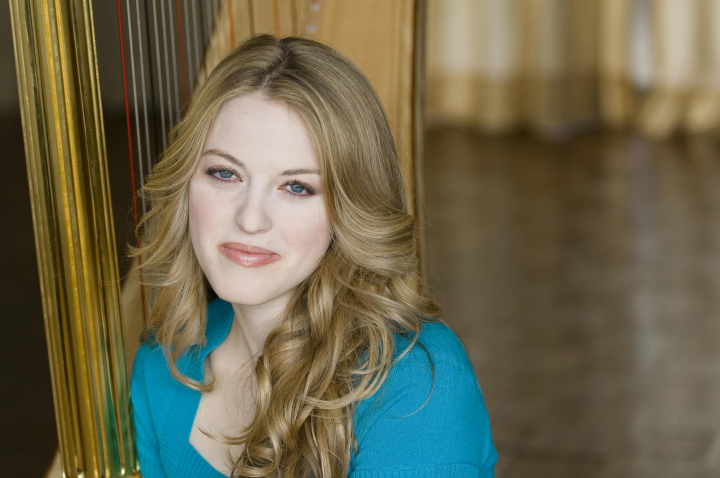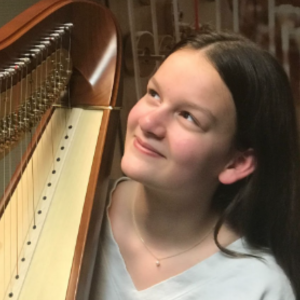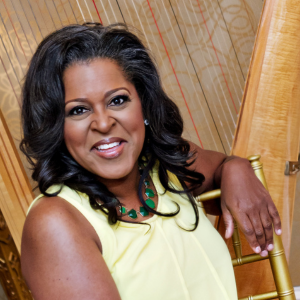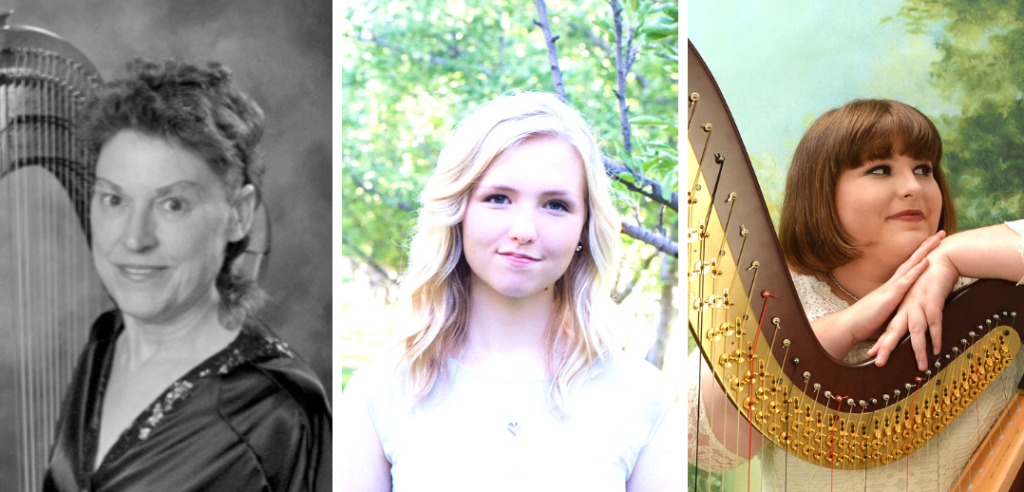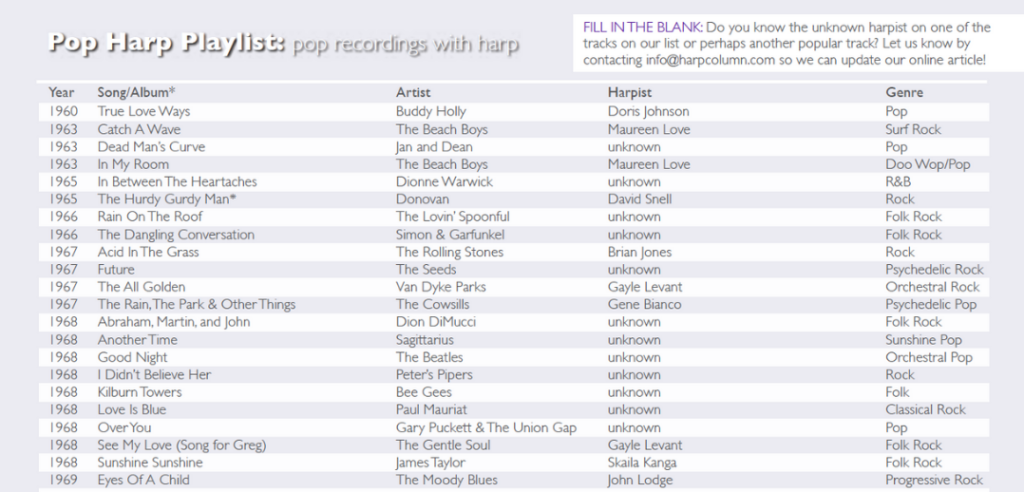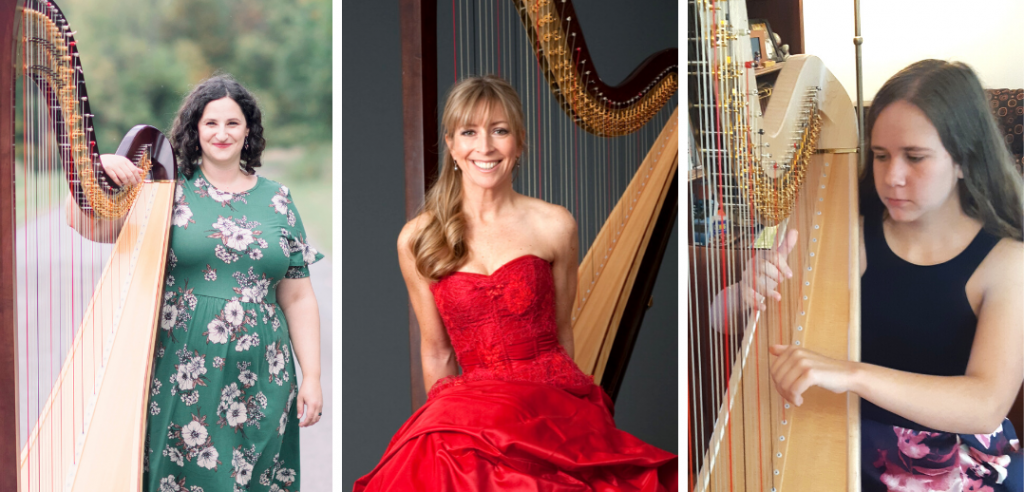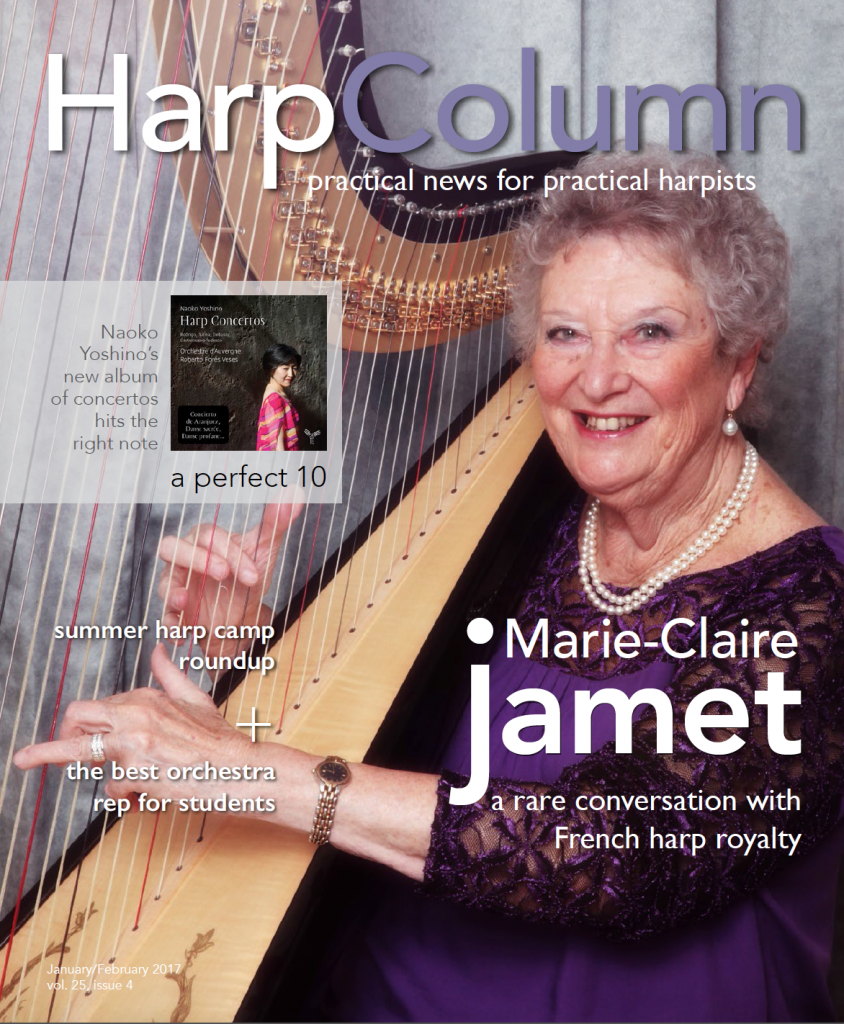—by Michelle Gott
This article extra is part of the feature article The Right Rep.
To prepare for orchestra, one of the best forums is a conducted harp ensemble. In this setting, students gain invaluable listening skills and confidence among like-minded peers who are all tackling the same instrumental challenges. It can also be helpful to explore music in small chamber groups, such as a flute and harp duo, and/or choral ensembles. Orchestral playing can be viewed as chamber music on a large scale, so the small ensemble experiences are therefore crucial to the evolution of a student’s awareness in orchestra. Look for opportunities to participate in harp ensemble, either through your teacher or at summer programs. (See the “Summer Harp Camp Roundup” on pg. 24 for a complete list of harp programs this summer.)
To prepare for the first rehearsal, there are several key elements to ensure success. First, when looking at a new part, find a good recording and listen to the full piece to get an overview. While listening, but not playing, try to follow along with your part, and have your teacher guide you if possible. You may get lost the first (or second, or third!) time through, but gradually you will catch more cues about how your part fits into the whole picture. After you have listened to the full work, the next step is to organize the details of your individual part. That includes carefully marking all pedal changes, finding the best fingering, and writing in helpful instrumental cues. For example, if you hear a clear entrance of the percussion at a certain measure, mark that in your part so you can always confirm where you are in the piece. This becomes especially useful if you have many measures of rests to count. Even the most focused person can sometimes miscount, so it’s comforting to confirm that you are in the right place! If you are debating a fingering, write down a couple solutions, work with one for a few days, and then try others if you feel something could work better for your hands. Remember that you’ll need to keep your eyes on the conductor much of the time, so experiment with fingerings that enable you to comfortably look away from your hands.
Once your part is fully marked, then you can begin to practice carefully, starting slowly and working with a metronome. It can also be useful to count out loud, say your pedal changes, and even sing the other instrumental parts that you will accompany in the orchestra. Good rhythm is always essential but is especially critical in ensemble playing, so be fastidious while learning your part. During this learning period, keep listening to recordings, focusing on how you will fit into the whole. For slower sections try playing along, once you have become comfortable with your part. Even if you make mistakes, try to stay with the recording rhythmically and pretend that you must keep going no matter what. For faster sections, try to determine what the average tempo will be and mark that down as your goal. You can easily determine this by listening to recordings and using the “tap” feature on any digital metronome or app. Listen to two or three recordings to get a good indication of the expected tempi, or talk with your conductor about his or her intentions. Last but not least, practice looking up from your music stand while playing your part, imagining the conductor, so you become comfortable looking away from the harp and your music. Even if you make some mistakes at first, you will establish trust with the conductor if he or she knows that you are developing awareness beyond your instrument.
It is also important to learn the conducting patterns for the most common meters and to practice conducting yourself. Try working with a rhythmic training book such as Basic Rhythmic Training or, for more advanced students, Rhythmic Training, both by Robert Starer. These manuals will teach you the basic conducting patterns you can expect in orchestra and provide you with various rhythmic exercises. You can then apply this knowledge to your orchestra parts by singing or speaking your rhythms while conducting. Going a step further, you can also practice conducting along with a recording while watching your part. By approaching your practice in so many different ways, visualizing your experience within the orchestra, and practicing your new skills in rehearsal, you will gradually develop a great awareness of the full ensemble and not just your individual part.
If you receive a part that seems too difficult, don’t panic! It’s easy to become overwhelmed by the full picture, but after taking some time to break down the tricky sections (with your teacher’s help) and absorb the new challenges, what seemed too difficult will become simpler. Tackle the sections that scare you the most and work slowly and patiently on them, being consistent about your fingering once you have developed good solutions. You can always go back and simplify if needed, but try putting your best foot forward first. What once was difficult may become easier than you ever anticipated! If simplification is necessary, remain true to rhythm and harmony, preserving as much of the composer’s intentions as possible. For example, if the composer wrote large four-note chords but the spacing is uncomfortable, simplify it into three-note chords while keeping the correct inversions. Arpeggios can be similarly reduced to a student’s comfort level. For complex chromatic passages, it may be possible to remove some notes or find clever enharmonic solutions that ease the burden tremendously. Solving enharmonic puzzles can be quite a fun exercise and a way to encourage creative thinking in part preparation.
Sometimes a student may be asked to adapt a violin or piano part if there is no harp included in the orchestration. For less advanced harpists, doubling a simpler violin part may present a fruitful exercise in learning to play with a section. More advanced violin parts, however, can be awkward on the harp so it may be more interesting for the high-school level harpist to engage in a harmony project, creating an original part based on the material of the whole string section. Should there be any budding composers in the ensemble, this could also be an opportunity to experiment with orchestration, perhaps doubling the harp with horn or low string entrances, much like Mahler. Piano parts can usually be adapted more readily because the material can be simplified rather than added. If a piano part is too chromatic, try simplifying the chords or play only one staff (whichever needs to be heard more prominently). If there are multiple repeated notes, look for enharmonic solutions or remove some of them, maintaining the essential rhythmic structures. The key is to honor as much of the composer’s intentions as possible while designing a part that works on the harp and sounds good in context. •
About the author: Las Vegas native Michelle Gott has played with some of the best orchestras in North America, including the New York Philharmonic, the Boston Symphony Orchestra, the St. Louis Symphony, the Toronto Symphony Orchestra, the National Arts Centre Orchestra, and the Boston Pops. She got her ensemble start young, playing duets with her mother at age 6, and then branching out into harp ensembles and orchestras. After attending the Juilliard School, she moved to Ottawa, Ontario, where she teaches at the University of Ottawa and directs harp ensembles at the Ottawa Youth Orchestra Academy.






